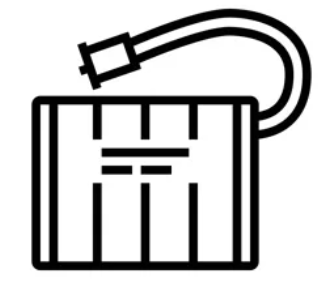Li-ion Battery
Li-ion Battery
What is a Li-ion Battery?
A Li-ion (Lithium-ion) battery is a type of rechargeable battery that is widely used in modern electronics, including robotics, due to its high energy density, lightweight construction, and long cycle life. Li-ion batteries are known for their ability to store large amounts of energy while remaining compact, making them ideal for mobile robots like the Jarvis Bot, where space and weight are critical considerations.

Key Features of Li-ion Batteries:
-
High Energy Density:
- One of the standout features of Li-ion batteries is their high energy density, meaning they can store a large amount of energy in a relatively small and lightweight package. This makes them highly efficient for use in robots, where minimizing weight without sacrificing power is essential for optimal performance.
-
Long Cycle Life:
- Li-ion batteries can endure hundreds or even thousands of charge and discharge cycles before their capacity starts to degrade significantly. This long lifespan makes them suitable for robotics applications that require frequent recharging, reducing the need for frequent battery replacements.
-
Low Self-Discharge Rate:
- Li-ion batteries have a low self-discharge rate compared to other types of rechargeable batteries, such as NiMH (Nickel-Metal Hydride) or NiCd (Nickel-Cadmium). This means they retain their charge for longer periods when not in use, making them ideal for applications like robotics, where the battery might not always be in continuous use.
-
Lightweight Design:
- The lightweight design of Li-ion batteries is crucial in robotics, especially in mobile robots like the Jarvis Bot. Minimizing the robot's weight allows for more efficient movement and longer battery life, which is important for extended operational time without frequent recharging.
Applications in Robotics:
Li-ion batteries are a popular choice in the field of robotics due to their superior performance characteristics. Here’s how they enhance the functionality of robots like the Jarvis Bot:

-
Reliable Power Source:
- Li-ion batteries provide a reliable and consistent power source for robots, ensuring smooth operation of all electronic components, including motors, sensors, and control systems. For the Jarvis Bot, a Li-ion battery ensures that the BO motors, motor drivers, Raspberry Pi, and other peripherals receive stable power for extended periods.
-
Extended Operational Time:
- With their high energy density, Li-ion batteries allow robots to operate for longer durations on a single charge. This is especially important for mobile robots like the Jarvis Bot, where continuous movement and sensor operations can quickly drain battery life. The use of a Li-ion battery ensures that the robot can perform its tasks without frequent interruptions for recharging.
-
Compact and Portable:
- Space is often limited in mobile robots, so the compact nature of Li-ion batteries makes them ideal for integration into robotic designs. The small size and lightweight nature of the battery enable designers to maximize the available space for other critical components without compromising on power. For the Jarvis Bot, the Li-ion battery fits neatly within the chassis while still providing ample energy to power the entire system.
-
Powering Multiple Components:
- Li-ion batteries can easily power multiple components simultaneously, including motors, controllers, sensors, and communication devices. In the Jarvis Bot, the Li-ion battery ensures that the Raspberry Pi, motor driver, BO motors, and camera can all function without power interruptions. Additionally, it can be paired with a voltage stabilizer module to ensure that the battery delivers the correct voltage levels to each component.
-
Rechargeable and Environmentally Friendly:
- The rechargeable nature of Li-ion batteries reduces waste compared to disposable batteries, making them a more environmentally friendly option. In educational and research robotics projects like the Jarvis Bot, where experimentation and frequent use are common, the ability to recharge the battery reduces both cost and environmental impact over time.
Considerations for Using Li-ion Batteries in Robotics:
-
Battery Management:
- Li-ion batteries require proper battery management to avoid overcharging, deep discharging, or overheating, which can damage the battery and reduce its lifespan. In robotics, battery management systems (BMS) or voltage stabilizers are often used to ensure the battery operates within safe parameters.
-
Safety:
- While generally safe, Li-ion batteries must be handled with care. Overheating or physical damage to the battery can lead to safety hazards, including the risk of fire. Ensuring that the battery is installed correctly and using appropriate charging equipment is crucial for safe operation in the Jarvis Bot.
-
Voltage Regulation:
- Many robotic systems require a specific voltage to function properly. In the case of the Jarvis Bot, a voltage stabilizer module is used in conjunction with the Li-ion battery to provide a stable voltage output, ensuring that all components receive the correct power.
Conclusion
In conclusion, the Li-ion battery is a crucial component in the Jarvis Bot, providing the necessary power for its motors, sensors, and control systems. Its high energy density, long lifespan, and lightweight design make it an excellent choice for mobile robotics applications. By understanding the benefits and proper use of Li-ion batteries, users can ensure optimal performance and longevity of their robotic projects, making the Jarvis Bot a reliable and efficient educational tool.